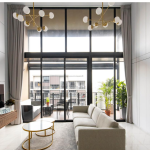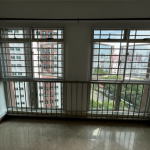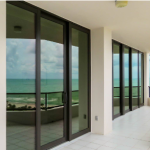The renovation industry in Singapore, pivotal to the country’s vibrant real estate market, has been experiencing rapid growth. However, this growth has not been matched by a corresponding regulatory framework. Unlike property agents, interior designers in Singapore are not subject to formal licensing requirements, leading to significant industry challenges. This article delves into why Singapore has not yet regulated interior designers, explores the potential benefits of licensing, and examines how such measures could address prevalent issues in the industry.
The Current Landscape of Interior Design in Singapore
In Singapore, the interior design sector thrives due to high demand from homeowners and businesses seeking to personalize their spaces. Despite its significance, the industry operates without a formal licensing system. This absence of regulation allows a wide range of individuals to enter the profession, resulting in a diverse mix of skill levels and practices.

Why Singapore Has Not Yet Regulated Interior Designers
- Low Entry Barriers: Unlike property agents, interior designers do not face stringent entry requirements. The low barriers to entry mean that virtually anyone can enter the profession with minimal qualifications. This lack of regulation contributes to inconsistencies in service quality and professional standards.
- Cost Concerns: There is a concern that licensing interior designers might lead to higher costs for homeowners. While a licensing system could raise the baseline for service quality, it may also increase fees for licensed designers. This potential cost increase could be a significant factor in the reluctance to implement licensing in the renovation industry. Owners that cost conscious will reluctant to pay extra for professional service.
- Freelance and Informal Practices: The rise of freelance interior designers and informal practices complicates the regulatory landscape. Many designers operate independently or through informal channels, making it challenging to regulate and enforce standards effectively. The grey zone of freelance design work can contribute to issues of accountability and quality control.
Industry Challenges and the Case for Licensing
- Inconsistent Quality: Without standardized qualifications, the quality of work varies significantly among interior designers. Homeowners often face difficulties in evaluating the competence of designers, leading to variable results and dissatisfaction.
- Lack of Accountability: In an unregulated industry, recourse for issues such as subpar work or unethical practices is limited. Homeowners may struggle to find avenues for redress or compensation, as there are no formal mechanisms in place.
- Misleading Practices: The absence of regulation allows for potential deceptive practices. Designers may inflate costs or recommend unnecessary services without repercussions, undermining trust and transparency.
- Professional Development: Without licensing requirements, there is less incentive for designers to pursue ongoing professional development. This lack of motivation can lead to outdated practices and a lower overall standard of work.

The Benefits of Licensing Interior Designers
- Standardized Quality: Licensing would establish a baseline for qualifications, ensuring that all practitioners meet certain standards. This standardization could improve the overall quality of interior design services and provide homeowners with greater confidence in their choices.
- Increased Accountability: A licensing system would create a formal structure for addressing complaints and enforcing ethical practices. This would offer homeowners clearer avenues for resolving disputes and seeking compensation if issues arise.
- Enhanced Protection for Homeowners: Licensed designers would be held to a code of conduct, reducing the risk of fraud and unethical behavior. This increased protection would help homeowners make informed decisions and avoid potential pitfalls.
- Encouragement of Professional Growth: Licensing would promote ongoing education and skill development among designers. This focus on professional growth would enhance the overall expertise and credibility of the industry.
Implementing Licensing: Challenges and Solutions
- Overcoming Resistance: Some industry professionals may resist licensing due to concerns about increased bureaucracy and costs. To address this, the licensing process should be designed to be efficient and cost-effective, minimizing barriers while maintaining high standards.
- Defining Clear Standards: Establishing comprehensive and clear standards for licensing is crucial. This involves creating guidelines for technical skills, ethical behavior, and professional conduct. Collaboration with industry stakeholders can help develop a balanced framework.
- Addressing the Grey Zone: The prevalence of freelance and informal practices presents a challenge for regulation. Implementing licensing could help formalize the industry, but it would require strategies to effectively integrate and monitor freelance designers.
- Balancing Costs: While licensing may lead to higher fees, it is essential to weigh this against the benefits of improved service quality and consumer protection. Transparent pricing and clear communication about the value of licensed services can help mitigate concerns about increased costs.
Conclusion
The lack of regulation in Singapore’s interior design industry poses significant challenges, including inconsistent quality, limited accountability, and the rise of misleading practices. Licensing interior designers could address these issues by setting standards, increasing accountability, and enhancing consumer protection. While concerns about costs and the informal nature of freelance work present obstacles, the long-term benefits of a regulated industry—such as improved service quality and greater professionalism—make a compelling case for change. As the renovation sector continues to evolve, adopting licensing could be a pivotal step toward a more transparent and reliable industry.
Share your thoughts and will you accept the move from either perspective from the homeowner/ landlords or from renovation industry.
Further reading :










